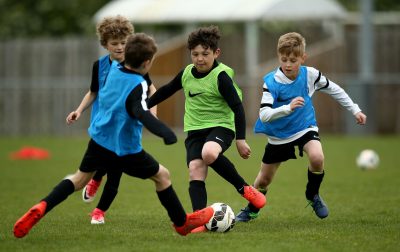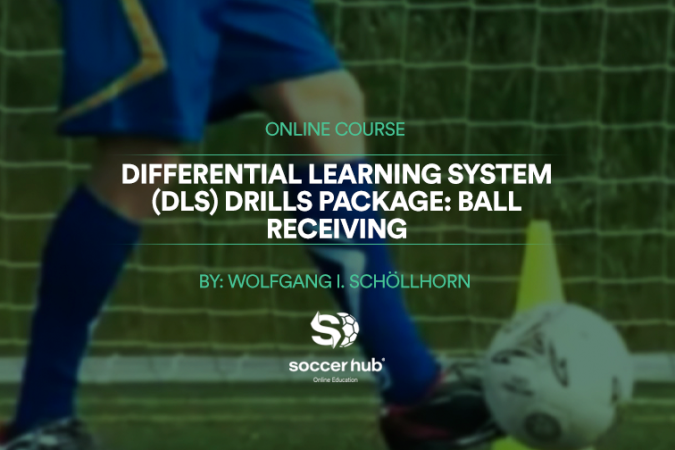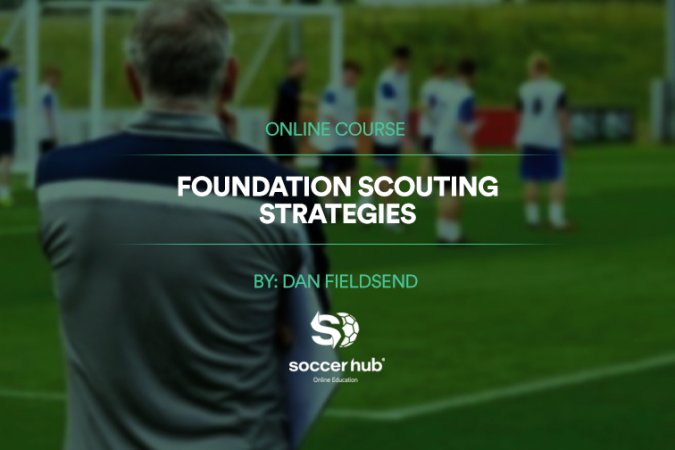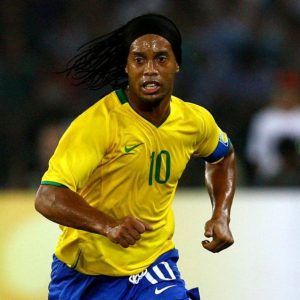

The importance of the play
An Update of Football Gregory Hallé Petiot – UEFA B, MS MA PgD
I recently went to visit colleagues I studied with in Brazil back in 2014, a hectic time over there due to the WC, or more specifically to the massive loss of the Seleção against Germany. Not only this has caused a complete turmoil in Brazilian soccer, the ripples of questioning and readjustments can be felt in other countries. Years after, progress is palpable, and we can learn from it all. Here is a personal perception of it, picking from both football chats and scientific reads.
The 7-1 loss against Germany has still a bitter taste to Brazilian. A taxista told me he even stopped watching his national team playing because of this game. The catastrophe has indeed shaken the whole football network in the nation, and even more who lives out of it. It has provoked criticism from pinpointing lacks in the training process up to the identity of play of clubs in the professional national championship. The earthquake was also felt in the scientific community as researchers, studying new ways to teach, assess, and train the game were finally given a chance to present their work. The heritage of this process, however, is only felt now, that is 5 years after, and can be put in relation with the situation in other countries.
At first, it is observed that more sport professionals are formed through the academic system. The pathway reflects an access to a wider range of concepts and a better understanding of the ties between the components of exercise and sports. Students are also incentivized to share their work in congresses and other scientific events, a highly valued system in Brazil.
In addition to train the scientific process, the exercise of presenting research works requires to reformulate your thinking and make it accessible. This is highly demanding when, for instance, lecturers are to present abstract concepts such as tactical behaviour, identity of play or training periodization.
I’ve witnessed this again during an international congress in the north of Brazil, where researchers from Brazil and Portugal have been uniting their competences for about 15 years to bring thoughts, new findings and revisited concepts to light. It’s a whole “ant duty” going on under the grass of soccer fields. And without it, there would be no quite refresh of complex conceptions of the game.
I’ve heard analogies that could explained to kids and graduating phys. ed. teachers, as simple as comparing the flexibility of a team to the ability of a plastic cup to take its shape back after being crushed. In brief, it truly feels the whole network is evolving to a more advanced understand of concepts of play, added with the ability to express these concepts and articulate them through match analysis and game learning curriculum.
Not only it is necessary to work with concepts, as Prof. Mesquita says, this readiness to articulate them during the day to day field work provides to coaches with more tools to operate training through games.
At glance, the famous quote about the pianist who trains by actually playing rather than running around the piano has made its way from Portugal to the world, and has certainly echoed the idea of the importance of the play. However, the play itself has to be pictured (realistically), designed, and modelled in order to come to efficiency.
In clear, letting play must not be limited to the formal game; it can (and must) be continuously transformed, reshaped, and revisited in its various forms. In addition to reigniting the susceptibilities of street free-play, this also offers variability and fosters creativity (for review, read Santos et al., 2016). This is where concepts are useful since they guide thinking but leave room to flexibility.
Having witnessed massive efforts to sell the benefits of small-sized and conditioned games (SSCGs) in Brazil and in other countries, I first came to observe the initial step of a long transition: the resistance to change. In Brazil just as in many other countries, switching from drills to play challenges tradition, habits, beliefs, and recipes. That is a huge step to make in a 200M nation that is built on strong traditional values, and even more so in a system that has seen professional players become coaches and repeat similar recipe for decades. But that’s just the beginning, and yet it may take longer in some communities than in other ones…
It forces to picture potential actions rather than drawing the ones you want to see; it requires to read behaviours before to command anything to anyone; it requires to appreciate the global picture whilst noticing details that change the game.
Despite changes in lifestyle, resources, politics, the nation of Brazil is suggestively anchored to several traditional mechanisms. This means the firsts to try will go against the flow, and challenge the whole network including their own local community. Notwithstanding, migrating to a more representative training process has its perks. All coaches can observe results in the play. It is more significative to players, but also more motivating. Although, it also has its risks. Such a complex approach is sometimes sold as just another recipe, and they are doing so to make it more accessible. But. It. Can’t. It HAS to be complex. It is by nature.
As a consequence to sharing simple and easy-to-set games, there is a tendency to converge and assimilate everything to SSCGs. The game-based approach is only useful if its malleability is taken as advantage, or, in other words, if you put your own signature to it. It is also only brilliant if the design is consequent to what you want your players to do (for review, read Machado et al., 2019).
Finally, it wouldn’t be consequent if there was no particular objective. And there is the danger: Even if it is in line with nonlinear pedagogy and common game literacy, limiting a new curriculum to these games in general without an identity would be just as limiting. Learning and training requires balance.
After his lecture, I’ve met a professional who’s duty is to analyze games so that he can pinpoint commonalities and disruptions to a defined club game model. Yet from youth category. That is brilliant as he can report to coaches and reinforce the importance (or not) of some ideas and concepts, and even refer to principles of play. And such investment are made by clubs that are not in the first division.
Thus, there are many sources of information available that we, coaches, can take into account to design games kids need. Originally, players must develop a certain game literacy, knowing what must seek to do in general. More specific tactical behaviour can be adopted in more complex games. Finally, game model and identity of play can be worked out if relevant information is available. All three main levels of play are incremental in complexity and, for this reason, must be adequately pictured, designed, and modelled.
To avoid the blank page problem when you design games, here are sources of inspiration you can base your work on, from youth to senior age levels; divergent structures of game, or even games taken from other sports; the core principles of play of the game of soccer (for review, read da Costa et al., 2009); the characteristics of your players, especially in terms of problem-solving capabilities and creativity.
On the top of the previously mentioned acquaintances, I’ve met colleagues who are creating master degrees in developing institutions, in line with these line of research; who are putting extension projects to redistribute such knowledge to the community, the presence of professionals; and who are directly contributing to the national curriculum. Useless to say that the importance of football is not merely felt in big stadiums. The impact of social projects built on football can be observed in many localities, and even if all projects are not incentivized by the government, qualifying future professionals still can chase these opportunities to express themselves.
In conclusion, Brazil has initiated an impressive transition under a state of panic. Despite it is still ongoing, the heritage of a change of that scale can inspire others. My country, Canada, which is undergoing a massive reform, could take advantage of such insights. In a wide perspective, it is inspiring to see how a five-times world champion also experiment its difficulties and how future professionals of the industry are tackling the challenge throughout the academic system. On a smaller scale, it highlights the difficulties of modernizing a passion that has been driven by tradition for ages. In both cases, however, it is important to realize that many countries definitely have all the resources required to overcome the effect of resistance, to distribute complex knowledge, and to guide individuals through the much needed variability of the game. This process is a challenging one since it is long, highly cognitive, and costly, but it is necessary to keep the pace of soccer’s evolution.
References da Costa, I. T., da Silva, J. M. G., Greco, P. J., & Mesquita, I. (2009). Tactical principles of Soccer: concepts and application. Motriz, 15(3), 657-668.
Machado, J. C., Barreira, D., Teoldo, I., Travassos, B., Júnior, J. B., Santos, J. O. L. D., & Scaglia, A. J. (2019). How Does the Adjustment of Training Task Difficulty Level Influence Tactical Behavior in Soccer?. Research quarterly for exercise and sport, 1-14.
Santos, S. D., Memmert, D., Sampaio, J., & Leite, N. (2016). The spawns of creative behavior in team sports: A creativity developmental framework. Frontiers in Psychology, 7, 1282.
Get to know more about Soccer HUB!
Follow us on Facebook!
Categories
Latest Courses
-
9 Lessons
-
1 Lesson
-
6 Lessons
You May Also Like
- Blog
- August 1, 2022
- Blog
- June 3, 2022
- Blog
- May 27, 2022
Developed by Brandit Digital Media Services.





